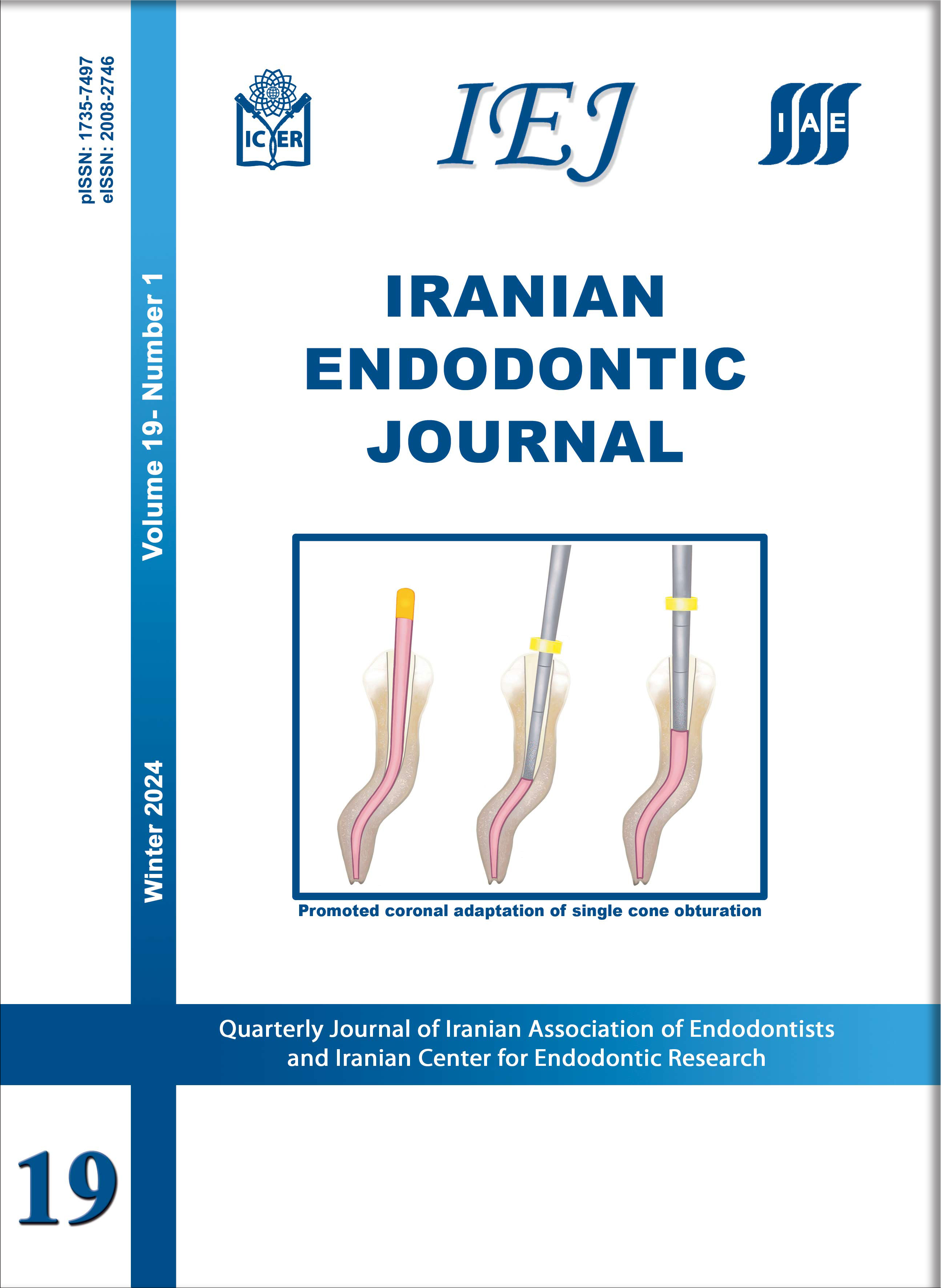Mineral Trioxide Aggregate vs Calcium-Enriched Mixture Pulpotomy in Young Permanent Molars with a Diagnosis of Irreversible Pulpitis: A Randomized Clinical Trial
Iranian Endodontic Journal,
Vol. 17 No. 3 (2022),
20 July 2022,
Page 106-113
https://doi.org/10.22037/iej.v17i3.35706
Introduction: The aim of this blind randomized clinical study was to prospectively compare the clinical and radiographic success outcomes of calcium-enriched mixture (CEM) pulpotomy versus white mineral trioxide aggregate (WMTA) pulpotomy in permanent molars diagnosed with irreversible pulpitis. Materials and Methods: Forty patients met the inclusion criteria and agreed to join. The patients were randomly assigned into two groups: CEM pulpotomy (n=20) and WMTA pulpotomy (n=20). Clinical success was reviewed at 7 days and 3, 6 and 12 months after treatment. We organized radiographic assessment at 6 and 12 months. The data was analyzed using Chi-square, Independent t-test, and Mann-Whitney for the baseline and post-operative characteristics of the patients. Results: None of the patients were lost during recalls. Twenty-one females and 19 males participated in the study ranging between 7-14 years of age. The follow up period was extended in some of the cases for more than 1 year (12-23 month). Regarding the baseline and post-operative characteristics of the patients, there was no significant difference between the groups (P>0.05). All the cases showed clinical and radiographic success outcomes for both groups at/after12-month recall periods. There was no significant difference between the two groups clinically and radiographically (P=1). Conclusions: Based on this randomized clinical trial study, CEM and WMTA as pulpotomy agents expressed excellent clinical and radiographic outcomes with no significant difference in the treatment of permanent molars with irreversible pulpitis over a 12-month period.




